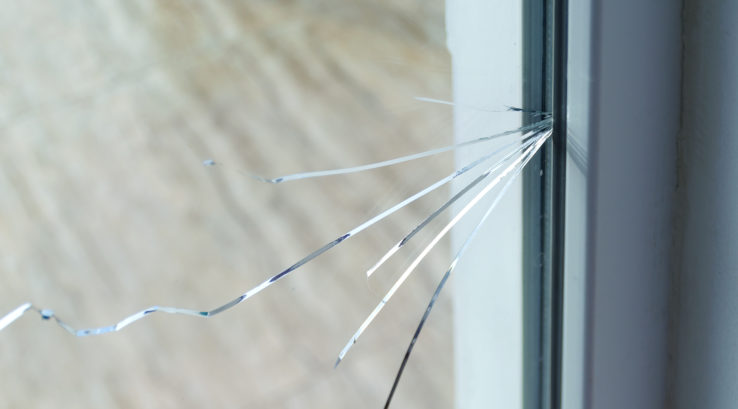Windows can develop cracks even if they haven’t suffered an impact. Thermal stress cracks are an example of this. Learn what causes window thermal stress cracks and how you might be able to prevent them.
What is a Thermal Stress Crack?
Thermal stress cracks are long, thin cracks that often appear on large windows. These cracks can appear suddenly and often confuse people because there’s no obvious cause. Windows may show multiple cracks running away from a central spot if there has been an impact, but a stress crack is simply a line with no clear source.
Physicists have discovered that the way glass breaks is surprisingly similar to the way metals respond to stress. Cracks form differently depending on their cause. If you have a crack in your window, you can tell if it’s a stress crack by looking for some tell-tale signs:
- Stress cracks run perpendicular to the edge of the glass
- They tend to extend in a straight line about half an inch or more from the window’s edge
- If the crack extends a long way, it may or may not ‘branch out’ after the first half-inch
Cracks that form a starburst pattern are not stress cracks and were probably caused by an impact. Cracks in an hourglass pattern are most likely pressure cracks.
Main Causes of a Window Thermal Stress Crack
A window’s thermal stress crack occurs when changing temperatures cause the glass in the window to expand at different rates. If the difference in the rate of expansion of two parts of the glass is too great, then the stress of that expansion could lead to a crack formation.
You may have seen something similar happen in the kitchen if you’ve ever rinsed a hot dish or cup under the cold water tap or exposed a cold dish to extreme heat. The sudden temperature change creates a thermal shock effect that causes parts of the dish to contract while other areas are still expanding. This is what causes the dish to crack.
Thermal stress cracks in windows are caused by the same principle, except instead of the damaging event being prompted by someone putting a dish into cold water too soon, environmental factors are the cause. Your windows are exposed to harsh elements, which means they go through heating and cooling cycles throughout the day. If the way that heating and cooling happens is drastic, cracks will form.
Why Do Large Windows Seem to Crack More Often?
Large picture windows, bay windows, and other styles that are recessed or partly in shadow due to their location tend to crack more often than smaller windows that are usually exposed to an even amount of sunlight. This is because one part of the window is exposed to the sun’s warmth, but another part is not.
The part that’s directly exposed to the sun heats up and expands more rapidly than the part in the shade. If the difference in the rate of expansion is significant, the stress from this creates a crack when those two areas meet.
Some important things to remember about stress cracks include:
- They’re not a sign that the window is old
- They’re not a sign that the glass was in some way flawed
- The shading of your home is the most significant contributing factor
The nature of stress cracks means they’re hard to prevent. Traditional techniques for preparing your windows for the winter won’t do a lot to help. The best thing you can do is find ways to improve your property’s shading, for example, by trimming trees that may be obscuring the affected window.
Contact a Professional Today
Alternatively, installing thicker panes may help reduce the risk of stress cracks. Consider some of the energy-efficient windows we offer, and get the added benefit of lower utility bills, too! Call us today to learn more about our windows, doors, and other products to help you get an energy-saving, stylish home. Our team of professionals is here to help.


